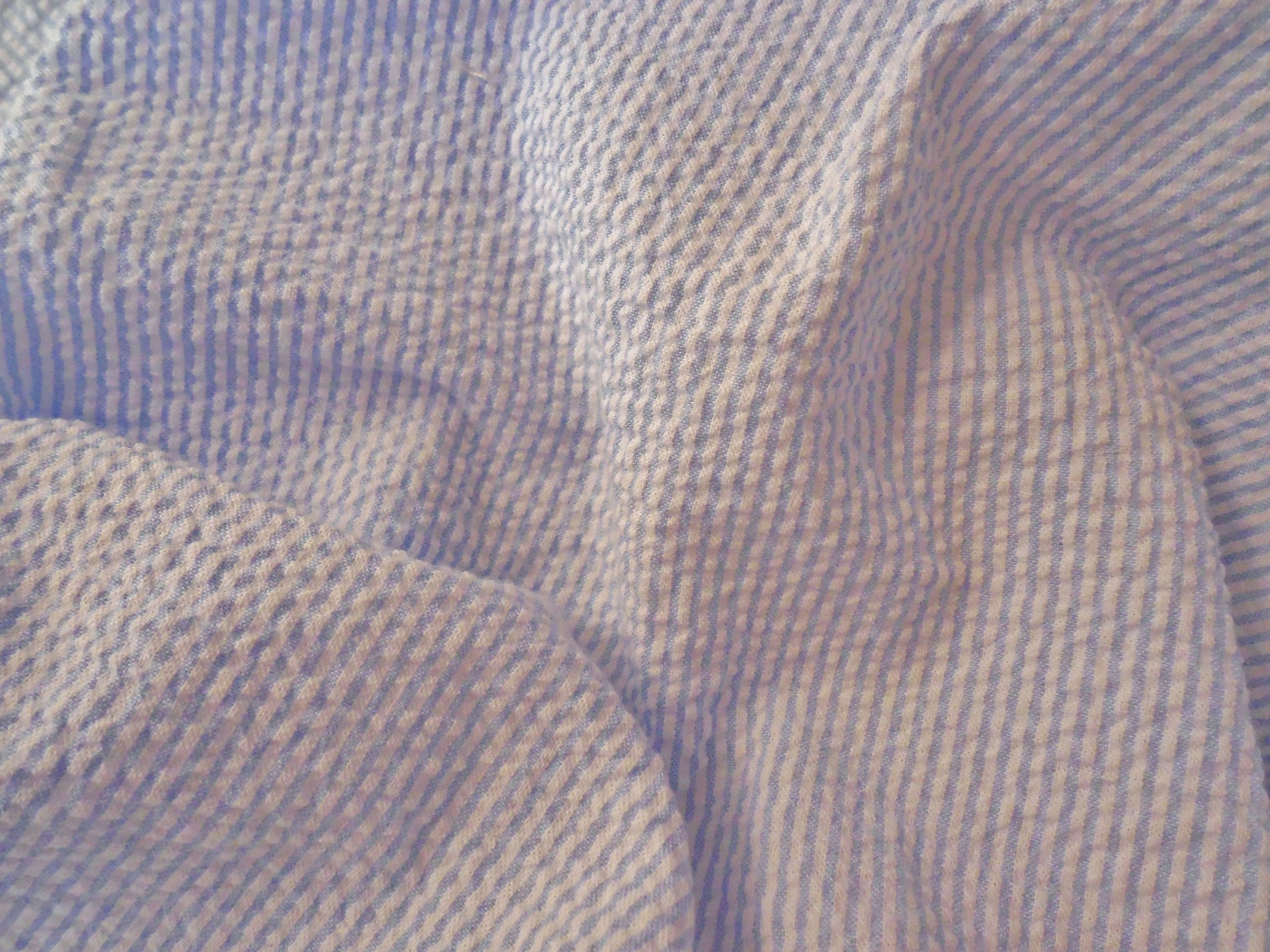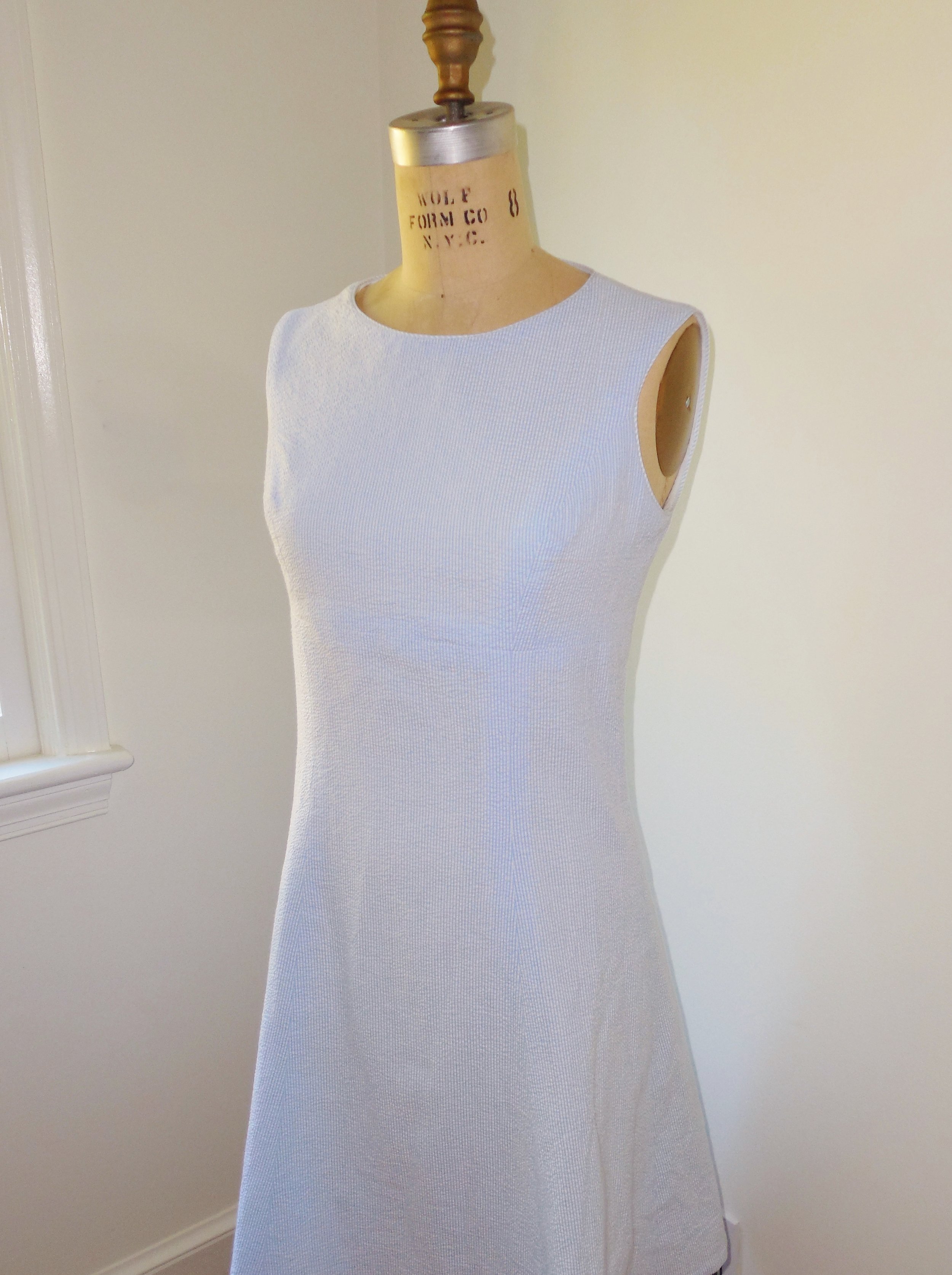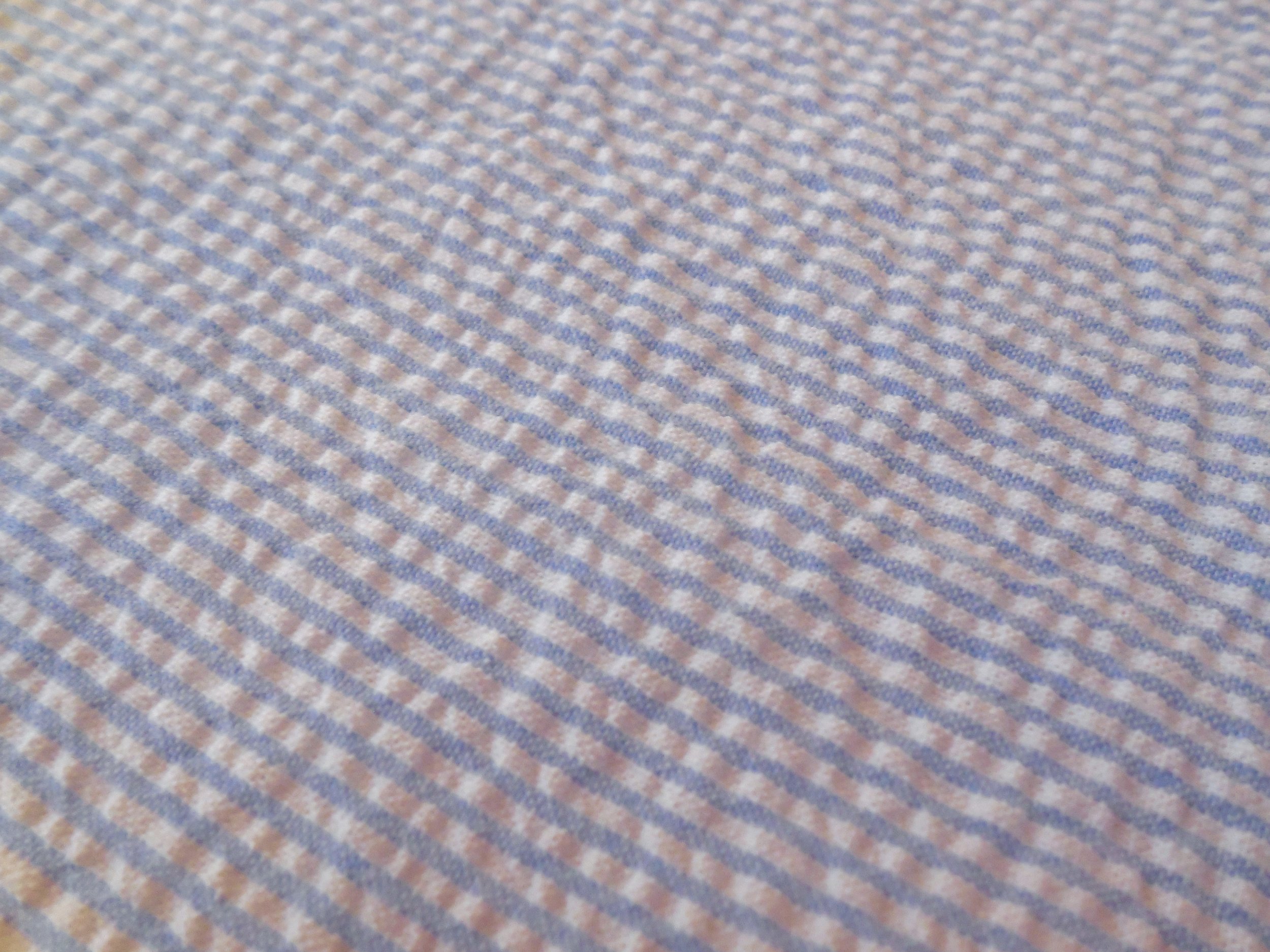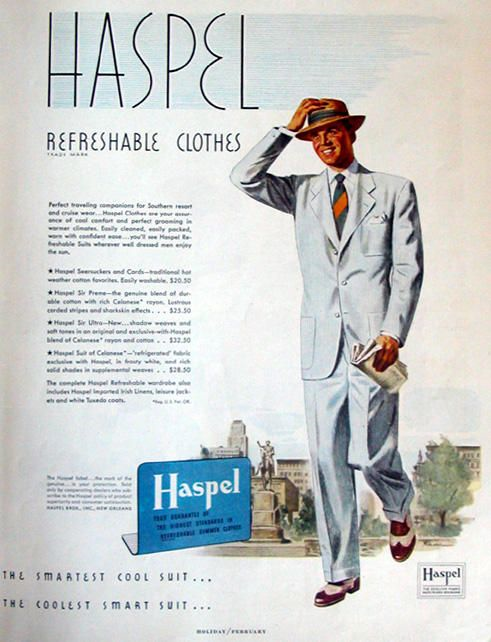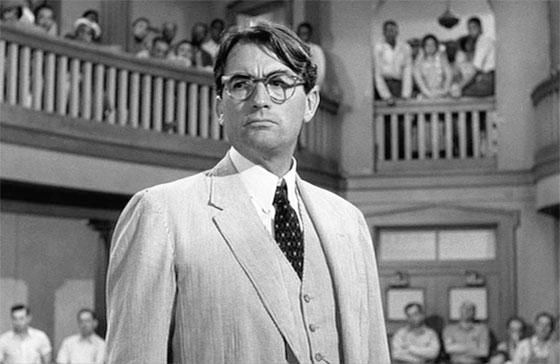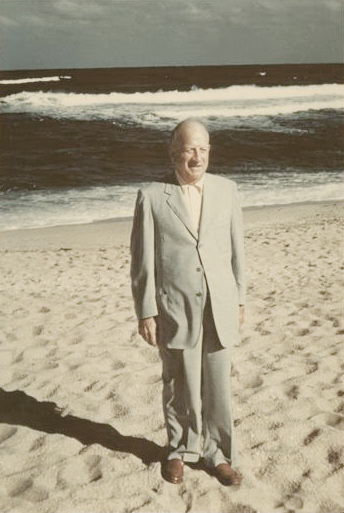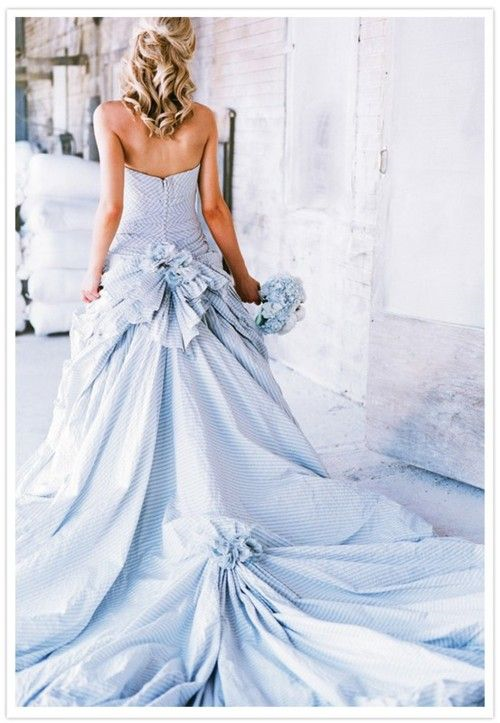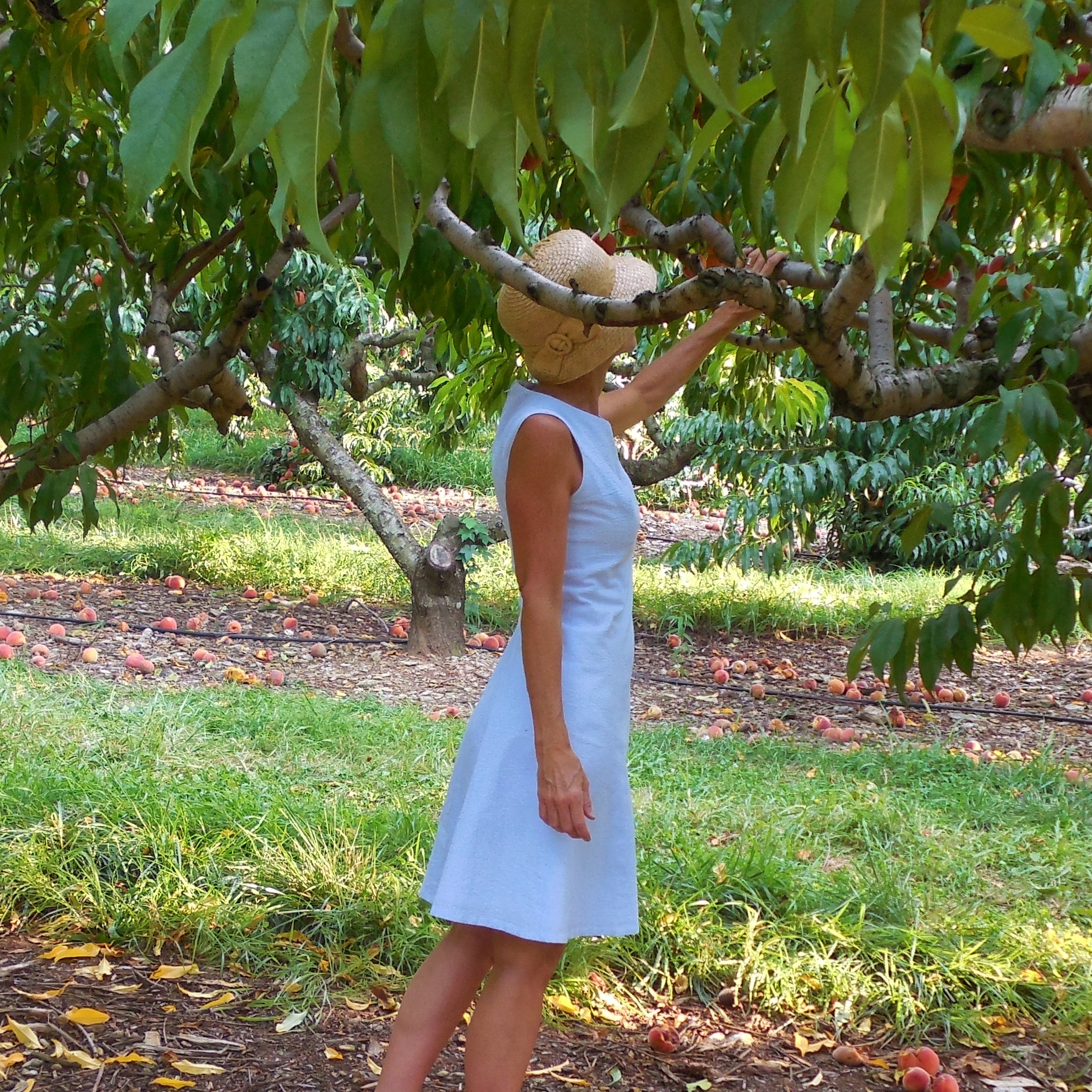The striped, puckered fabric of the CoolYou Dress in True Blue is called seersucker. We chose it because it keeps the wearer cool and it holds a crisp look that rarely needs ironing. A great look for a hot summer day.
What does this strange word mean? How does it stay puckered? Is it always blue and white? And isn't it used in men's suits? OK. Here we'll answer your questions.
The word seersucker is thought to come from the Persian words 'shir u shakar' for 'milk and sugar' -- probably a nod to the contrasts in the fabric between the smooth and puckered. When English merchants started importing this cloth from India in the 18th century, they called it 'seersucker.' Durable and cool to wear in even the hottest climates, it was first used as a material for workmen's clothes -- though of course that has changed a lot in the last 300 years.
Pucker comes from the weaving process. Some of the crosswise yarns are pulled tighter than others, creating an uneven surface we see as ripples or puckers. The puckers of true seersucker will not be removed by the heat of an iron. They also serve to hold the cloth away from the body, which allows air to circulate and keep the wearer cool. Seersucker may be woven from many different fibers: most common are cotton, linen, or cotton blended with synthetic fabrics like polyester. Traditional seersucker, as is used in the CoolYou dress, is 100% cotton, also valued for its breathability and coolness.
And yes, you've seen this fabric used in men's summer suits. Back in 1909 Joseph Haspel, Sr., a clothing manufacturer in New Orleans, created this menswear classic. His company, Haspel Refreshable Clothes, had been making seersucker coveralls for factory workers. He had the idea that this comfortable, durable fabric could also be stylish and made up a seersucker suit. To show its extraordinary powers of rebound Haspel, dressed in his product at a clothier's convention, walked into the ocean up to his neck, came out, hung the suit up to dry, and wore it that night to the banquet. By the 1950s the suit was a staple of American menswear, particularly in the hot, humid South. The seersucker suit took its place in American clothing history when Gregory Peck wore one in an Alabama courtroom in his Oscar winning role in the 1962 movie, To Kill a Mockingbird. Mr Peck was suited personally by the creator's son, Joseph Haspel, Jr.
The most traditional color combination for seersucker is blue and white. But a cloth may still be seersucker and the stripes any color. The width of the stripe may vary, from 1/10 inch to 1/4 inch. There are also seersuckers that are printed with a pattern. The term seersucker refers to the manner of weaving and the distinctive puckers, whatever the colors or style of garment.
The airy comfort of seersucker lends itself to many uses, from wedding gowns to the iconic suit to the CoolYou dress. The United States Senate has a Seersucker Day every June -- with both sexes and both parties welcome to participate. It's no surprise that towns like New Orleans or Washington, DC inspire designers to put it to good use. As Mr. Haspel said, "hot is hot, no matter what you do for a living."
Watch here to see the CoolYou Dress in action on a hot day.

